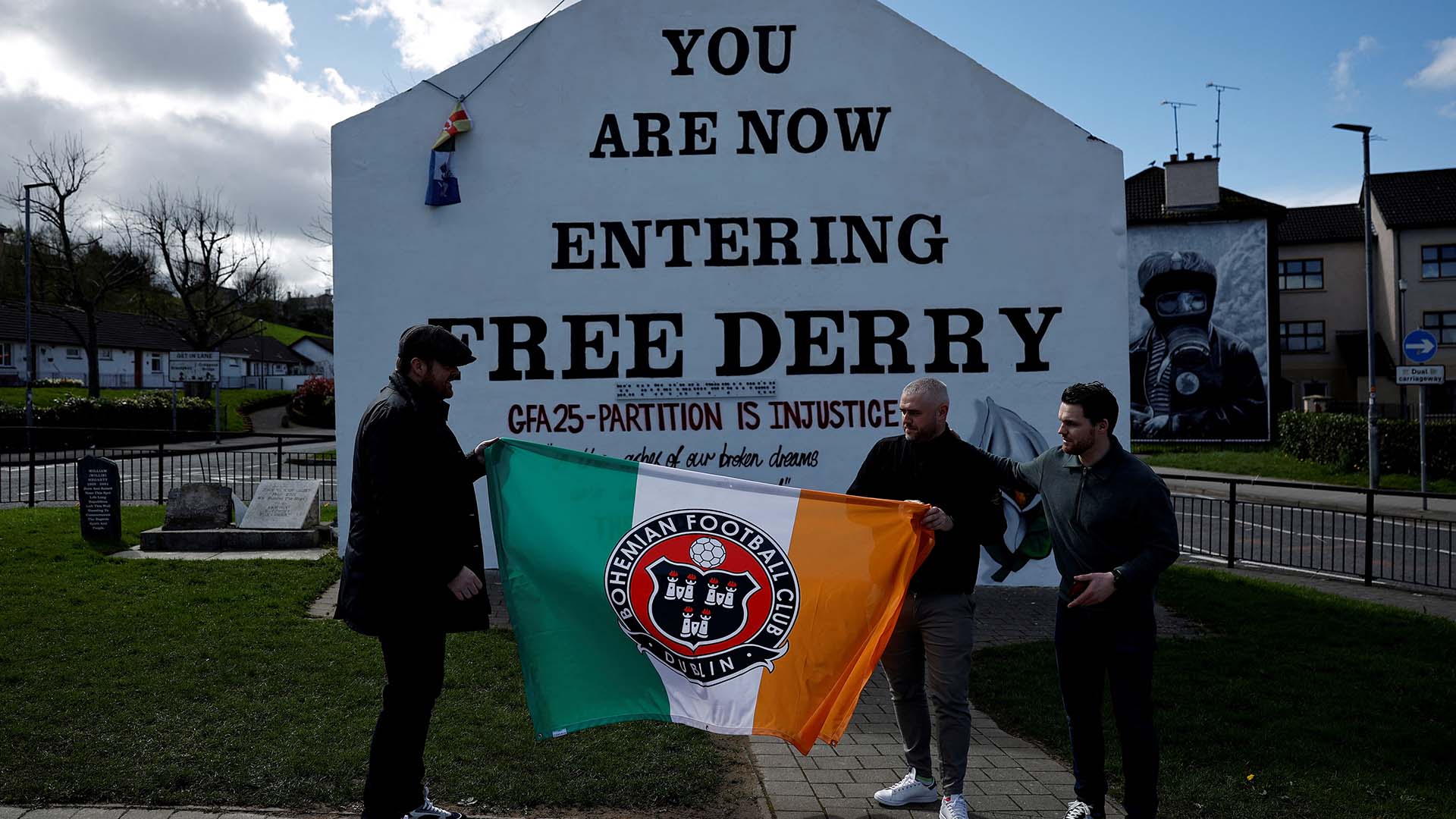


Considering what a big deal it was at the time, there is surprisingly little comment in the United States about the 25th anniversary of the Good Friday Agreement, which helped close the era of the Troubles in Northern Ireland.
Although the European Union often gets credited for making peace possible, the heavy diplomatic lifting was done by America, along with the United Kingdom under Tony Blair and Ireland under Bertie Ahern. Former Maine senator George Mitchell played the key role in brokering the agreement. The GFA led to a release of violent republican and loyalist paramilitary members. It required the IRA to decommission its weapons. The Republic of Ireland removed its irredentist claims upon Northern Ireland from its constitution. The United Kingdom and the Republic of Ireland granted to have, at an unspecified point in the future, “border polls”– votes on both sides of the Irish border that could lead to Irish unity. And it reformed — some would allege, denuded — Northern Ireland’s institutions. For instance, the Royal Ulster Constabulary was replaced with the Police Service of Northern Ireland. The Queen’s crown was removed from the uniforms. Crucially, it reformed Northern Ireland’s devolved Parliament, Stormont, and required a power-sharing arrangement where Unionists and Nationalists would each be able to check each other and nothing could pass without the other community’s consent.
Some of the people constructing the agreement believed that Stormont would evolve — that the parties in it would cease to be identified primarily by their dueling national allegiances and instead be ones on a left–right spectrum. Instead, the Parliament weakened moderate parties on both sides and empowered Sinn Fein and the Democratic Unionist Party. This means conservative Irish nationalists must put up with an increasingly left-wing Sinn Fein, and progressive unionists often end up represented by a socially conservative party.
Currently, the DUP has withdrawn from Stormont over its objection to the Northern Irish Protocol and the Windsor Accords — the special trading arrangements meant for Northern Ireland under the terms of the United Kingdom’s withdrawal agreement from the European Union. Without their participation, Northern Ireland reverts to being governed entirely by the mother Parliament in London.
President Biden is set to visit the Republic of Ireland and Northern Ireland next week to mark the occasion, despite the lack of a functioning Executive in Northern Ireland.
There’s a smart interview in the Irish Times with Unionists who opposed the Good Friday Agreement 25 years ago, and mostly still do. They saw it as a capitulation to terrorists that let the political apologists for terrorism into the political mainstream:
“Effectively all aspects of the talks [political discussions in the run-up to the agreement] I wasn’t particularly happy with – an increased role for the South in the affairs of Northern Ireland, the decommissioning thing was a fudge, the inclusion of Sinn Féin and the sanitisation of Sinn Féin, the effective disbandment of the RUC.
“All those things were very bitter pills for people of my community to swallow,” he says.
There is also this very intelligent piece by Tom McTague in Unherd about how Northern Ireland was “built to be abnormal.” That is, the Good Friday Agreement was structured to keep both sides in power — sharing power. Neither taking turns tyrannizing the other, but neither ever losing power, either. And I think he lands on the most important point:
Either way, the great irony is that as Northern Ireland becomes more normal, the Good Friday Agreement becomes less workable. This is in large part because it has always meant different things to each side. For many nationalists it was a process. As Gerry Adams said in 1999: “The Agreement is not a peace settlement, nor does it purport to be one.” Rather, he claimed, it was “the beginning of a transitional period towards Irish unification”. To unionists, it was no such thing. It was a settlement, a reasonable compromise upon which a new Northern Ireland could grow.
Unionists wanted the GFA to end Irish republican terrorism. Irish Republicans wanted the GFA to begin a legitimate and democratic path toward Irish unity. These are still fundamentally two peoples, with two conflicting national allegiances and identities. A quarter-century of peace without oppression is an achievement to be celebrated. And while the vast majority of Northern Irish people want peace to continue, the peace exists on a political settlement that is fundamentally unstable and arguably unwanted. Republicans want to make strides toward Irish Unity, and Unionists now want to repair the Union itself, injured by the Withdrawal Agreement. The Good Friday agreement arranges things to frustrate both aspirations for a long time to come.
